From an investment of 10 billion dong (442,000 US dollar) in 2014 for raising 1,700 rabbits, a young entrepreneur in Hanoi has become one of the leading commercial New Zealand rabbit raisers in Vietnam, earning some three billion dong per year.
Covering an area of 20ha in Hanoi’s outskirts of Son Tay, the New Zealand Rabbit Breed Centre supplies 10,000 rabbits annually of which 6,000 rabbits are breeders.
According to the centre’s owner and general director Phung Van Toan, raising New Zealand rabbits is not common in Vietnam despite the fact that New Zealand rabbits are hardier, are more fertile and easier to raise in comparison with Vietnam’s rabbits.
“In addition, raising New Zealand rabbits on an industrial scale will help to control waste management”, Toan said.
Toan’s centre has three breeding facilities including a facility to raise rabbits for meat, a facility for breeding and a facility for copulation. Most of the facilities are equipped with modern husbandry technology such as ventilation systems, heating systems and auto feeding systems. Waste from rabbits is channeled to an underground biogas digester. Toan said in order to keep rabbits healthy, most of the rabbits are vaccinated every 6 months to avoid bacteria, diarrhea and other diseases.
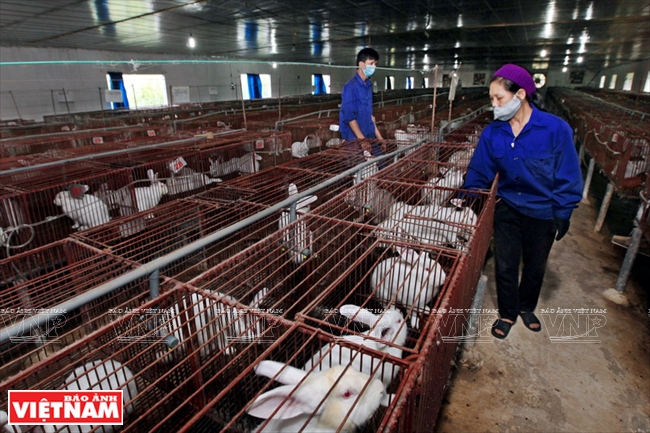
As many as 10,000 New Zealand rabbits are being raised in Toan’s facility in Hanoi’s outskirts of Son Tay. Photo: Tat Son
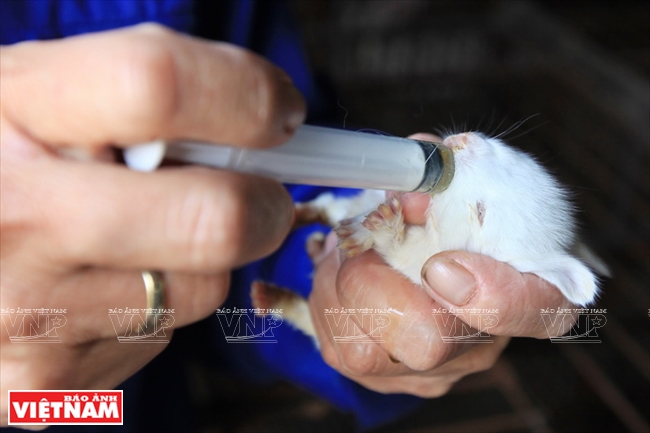
A one-week old bunny is being fed with nutrients to increase its immunity. Photo: Tat Son
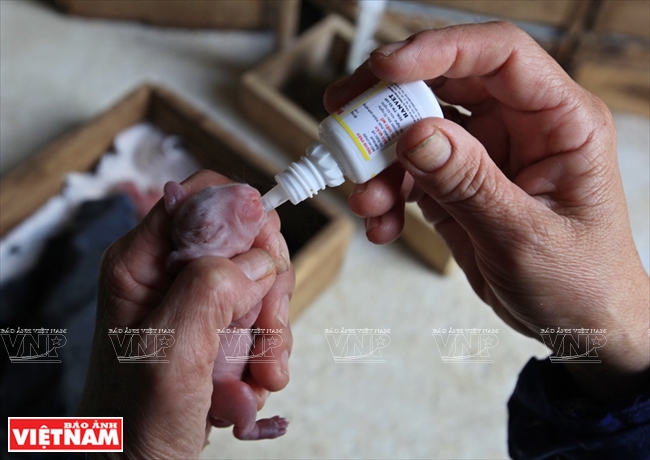
A newly born bunny is being fed special formulated nutrients. Photo: Tat Son
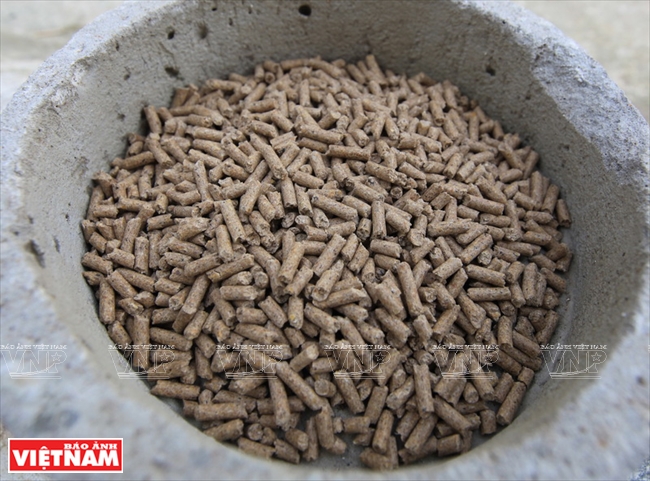
Feed is formulated from natural cereal and protein to provide a well-balanced diet and to provide all the nutrients needed
for a rabbit to grow and to be healthy. Photo: Tat Son

A nest for baby rabbits. Photo: Tat Son
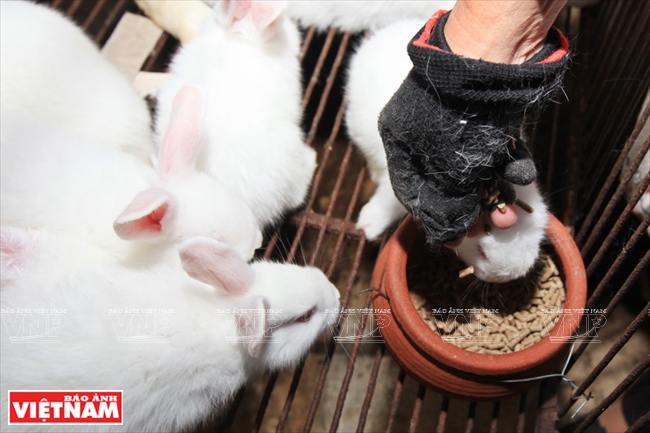
Rabbits are being fed. Photo: Tat Son

A family of rabbits. Photo: Tat Son
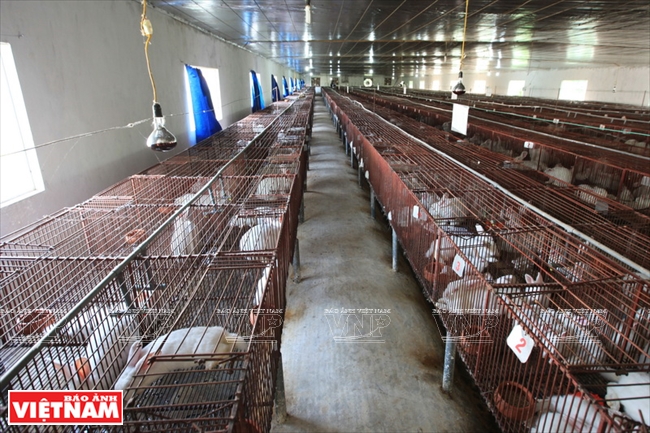
Most of the facilities are equipped with modern husbandry technology, such as a ventilation system, a heating system and an auto feeding system. Photo: Tat Son
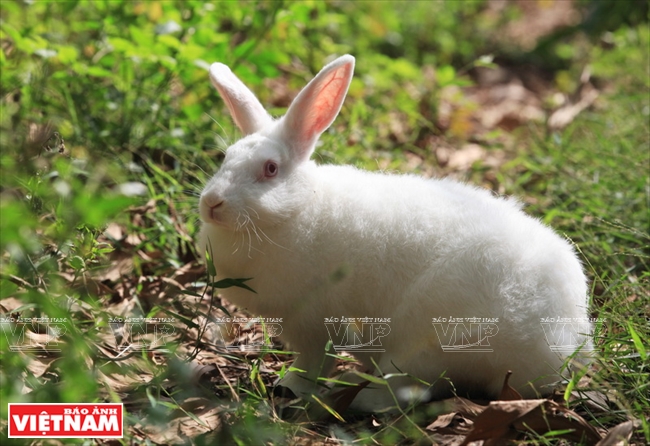
New Zealand rabbits are hardier, more fertile and easier to raise in comparison with Vietnam’s rabbits. Photo: Tat Son
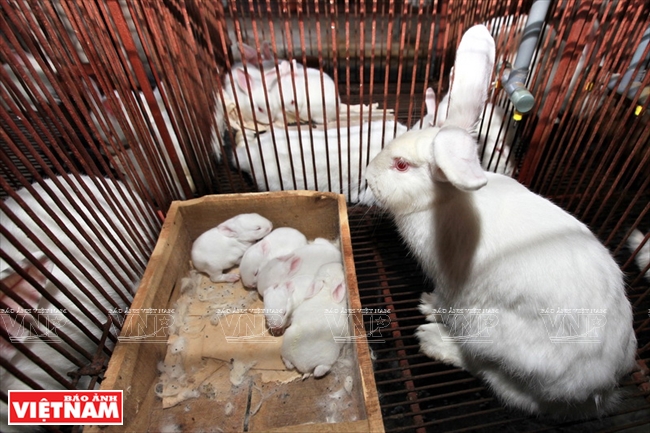
New Zealand rabbit could weigh 2.5 – 3 kilogram. Photo: Tat Son |
|
The New Zealand rabbit has a rather well-rounded commercial body shape, which is slender yet muscular. They have round cheeks and long ears that stand straight up. They also have long back feet and small, short, front pectoral muscles. |
Most of the rabbit’s feed is formulated from natural cereal and protein to provide a well-balanced diet and to provide all the nutrients needed for a rabbit to grow and to be healthy.
According to Toan, after 90 days, a New Zealand rabbit could weigh 2.5 – 3 kilogram and sold for 150,000 VND per kilogram (for breeding purposes) and 70,000 – 90,000 VND (for meat).
After reducing all expenses, the centre earns over 3 billion dongs. At present, the centre is a prestigious centre that not only provides rabbits for the domestic market but also exports to Japan and France.
Story: Thuc Hien - Photos: Tat Son